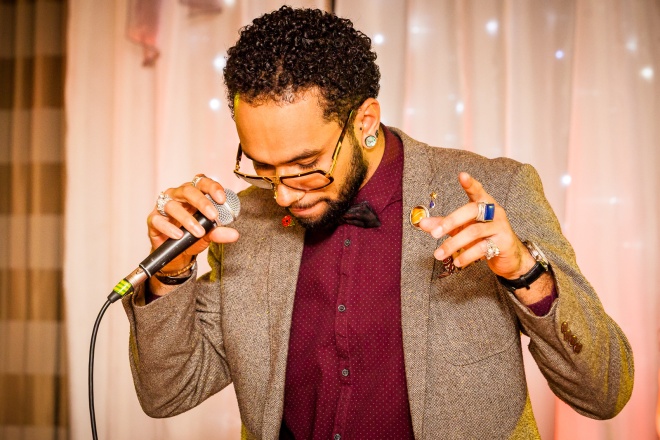Did you know…
The word “photography” is a combination of the Greek root words “photo-,” meaning “light,” and “-graphia,” meaning “writing” or “drawing.” Thus, “photography” literally means “writing or drawing with light.” (Source: https://www.reference.com)
That’s all very well, and most of the time there is more than ample light to play with during a shoot and it’s simply a case of identifying whether it needs diffusing (softening), shaping or controlling in some form. However what happens when there is very little light? How do us photographers cope with with night-time shoots, indoor events and a general lack of the bright stuff? Below are a few low-light shots from various assignments and a little explanation of how I utilised my dirty low-light skills!
Working with what you have

This shot was taken during a charity event in a beautiful but very dimly lit cathedral (St. John’s College, Cambridge). In such sacred buildings, flash and artificial light are forbidden and it is simply a case of working with what you have. Tripods and slow shutter speeds do not work when shooting moving subjects (such as public speakers photographed here) and so I needed to be able to have a shutter speed that was fast enough to freeze the animated actions of the speaker above. Luckily my professional camera has a sensor that still produces high quality images at extreme settings and I could utilise this to help increase the shutter speed and get the shot needed. It’s a little “grainy” but this small amount of digital noise (the term we use for grainy images) is a lot better than a blurry under-exposed image that didn’t capture this charismatic gesture. For me, capturing the moment, mood or brand of the subject matter is the most important part of my job and in such extreme settings sometimes a compromise has to be made.
Looking for the Light

At times, even in the darkest of buildings, there are little spots of light that can help the subject to pop out from its surroundings and create a shot with real atmosphere. By exposing just for the brightest part of the image in a dimly-lit scene (known as spot metering), professional photographers are able to allow darker items in the shot to fade into the background and draw the viewers’ eye to the main focal point. The shot above from Acanteen’s Halloween event is a perfect example of how exposing for a small part of the image helped me to produce a sense of atmosphere and intrigue that communicated the story of the occasion.
Adding Artificial Light

For many events that take place in the evening, it is essential that I know how to use artificial light quickly and in a manner that flatters the attendees and performers. An external flash (known as a speedlite) is perfect for such occasions as I can pop it on to my camera and move around the venue and take shots quickly and without interrupting or slowing down proceedings. This flash is unobtrusive as it is never aimed directly towards the subject and is perfect for corporate and social occasions that need a little extra lighting. Sometimes there is only stage lighting to work with, but I love being able to mix my artificial light with the ambient lighting in the room. Doing so can create vibrant and colourful images that will help the event organisers to promote future events to potential new attendees.
Finding a Story in the Darkness

This shot is actually from my personal street photography portfolio, but it’s a great example of how light can be used to tell a story, set a scene or entice viewers to ask questions. Here I used the light in the shot to draw the viewers’ eye into the scene, but used the lack of details in the people’s faces to create a sense of the unknown. What is being said? What might happen next? We will never know but it makes us as viewers stop and think.
Therefore low-light isn’t always bad news and low-lit images can work well if you are looking for shots that force your clients to ask questions and spend those extra few seconds engaging with your promotional material or website.
So there you have it – a little insight into how I work in low-light situations. Sometimes low-light means a bit of extra kit, sometimes it means a bit of compromise but one way or another I can light up even the darkest of rooms (photographically speaking at least)!
Have you tried any low light photography? Let me know in the comments section below.
Until next time, have a great week.
Ross
Ross Willsher is a social (weddings and portraits) and commercial photographer based in Chelmsford and covering Essex and London, who is passionate about creating images as individual as you are. His work can be viewed at www.rosswillsherphotography.co.uk / www.rosswillshercommercialphotography.co.uk
facebook.com/rosswillsherphotography | @RWillsherPhoto | instagram.com/rosswillsherphotography | www.linkedin.com/in/rosswillsher/
